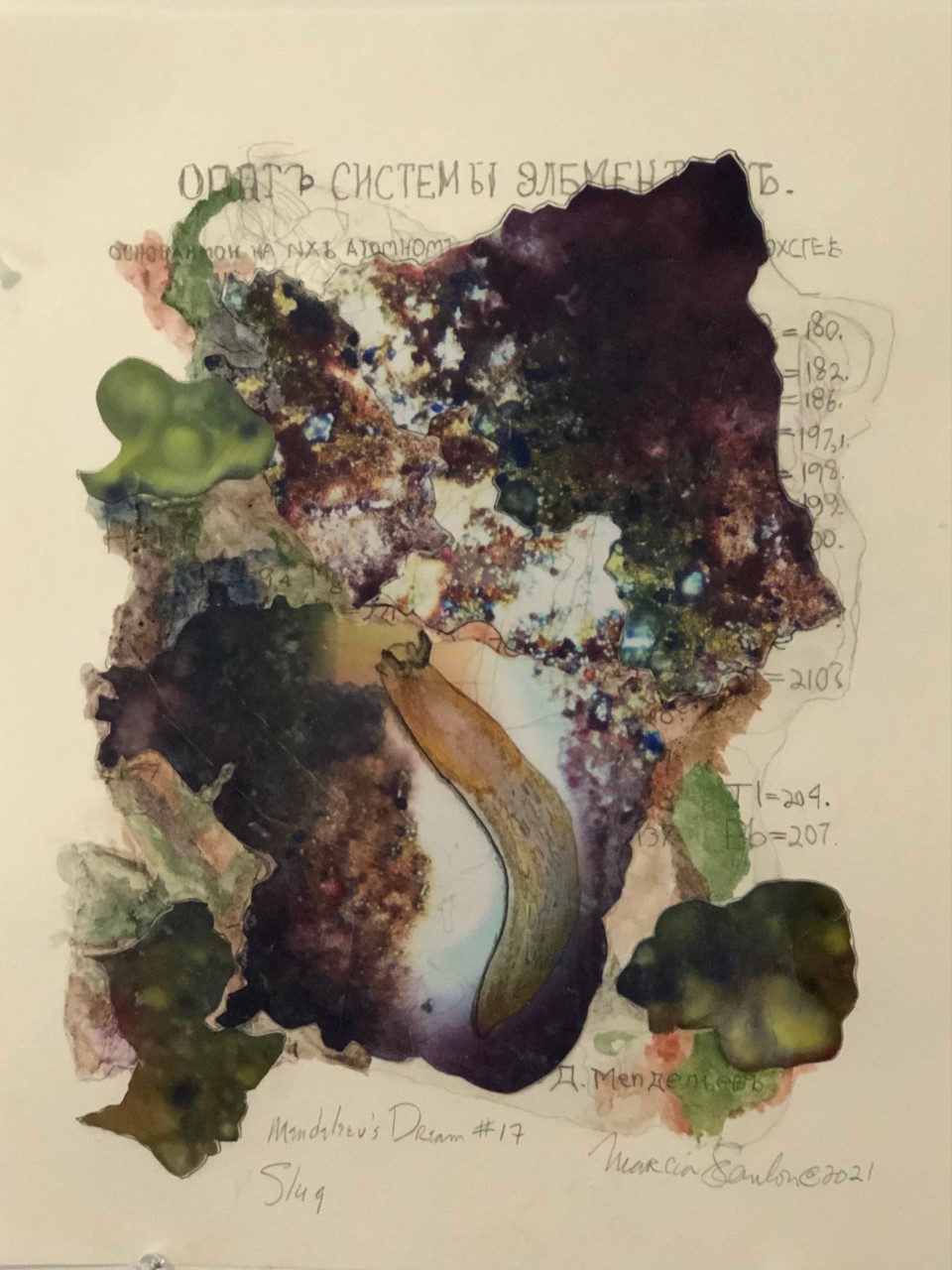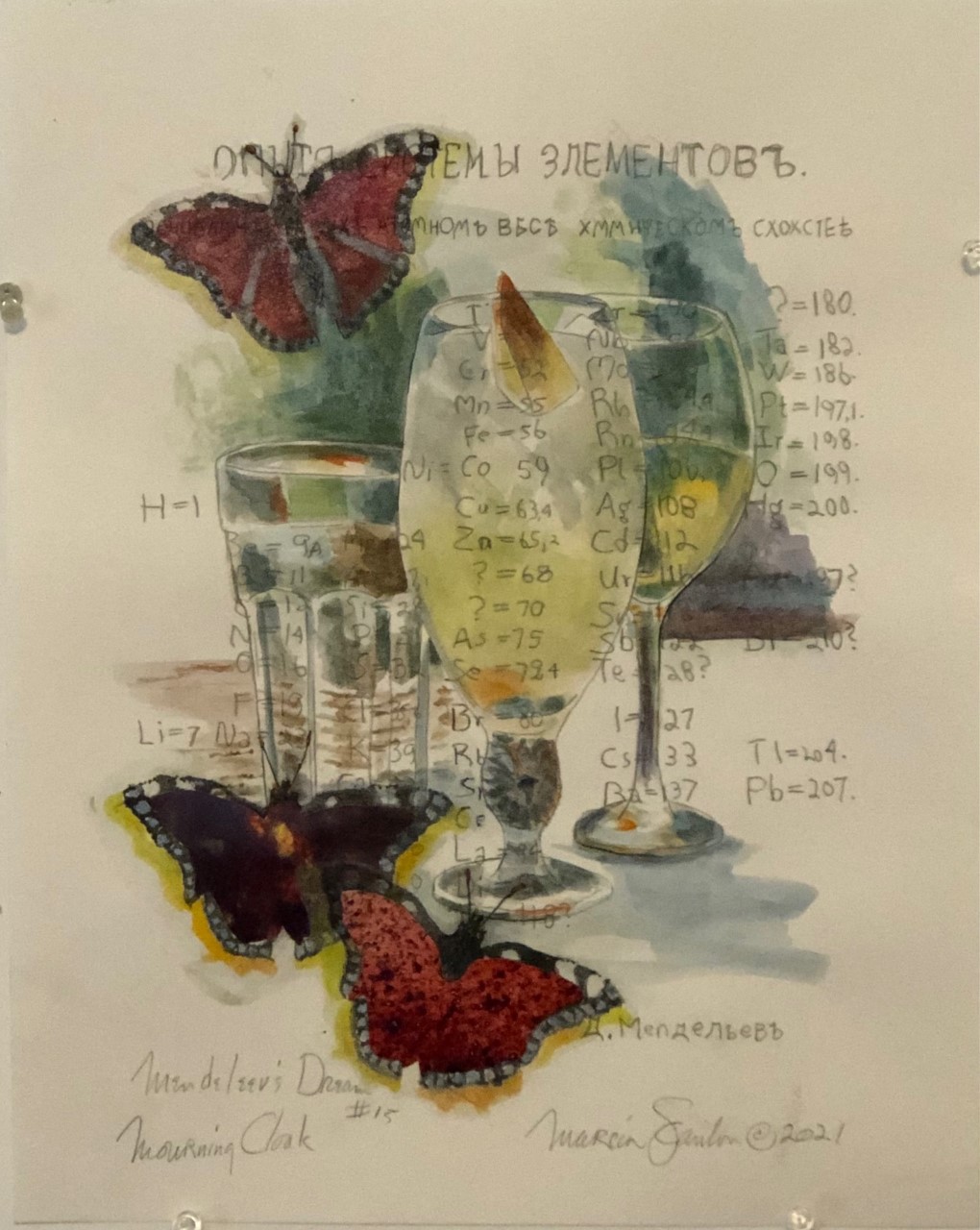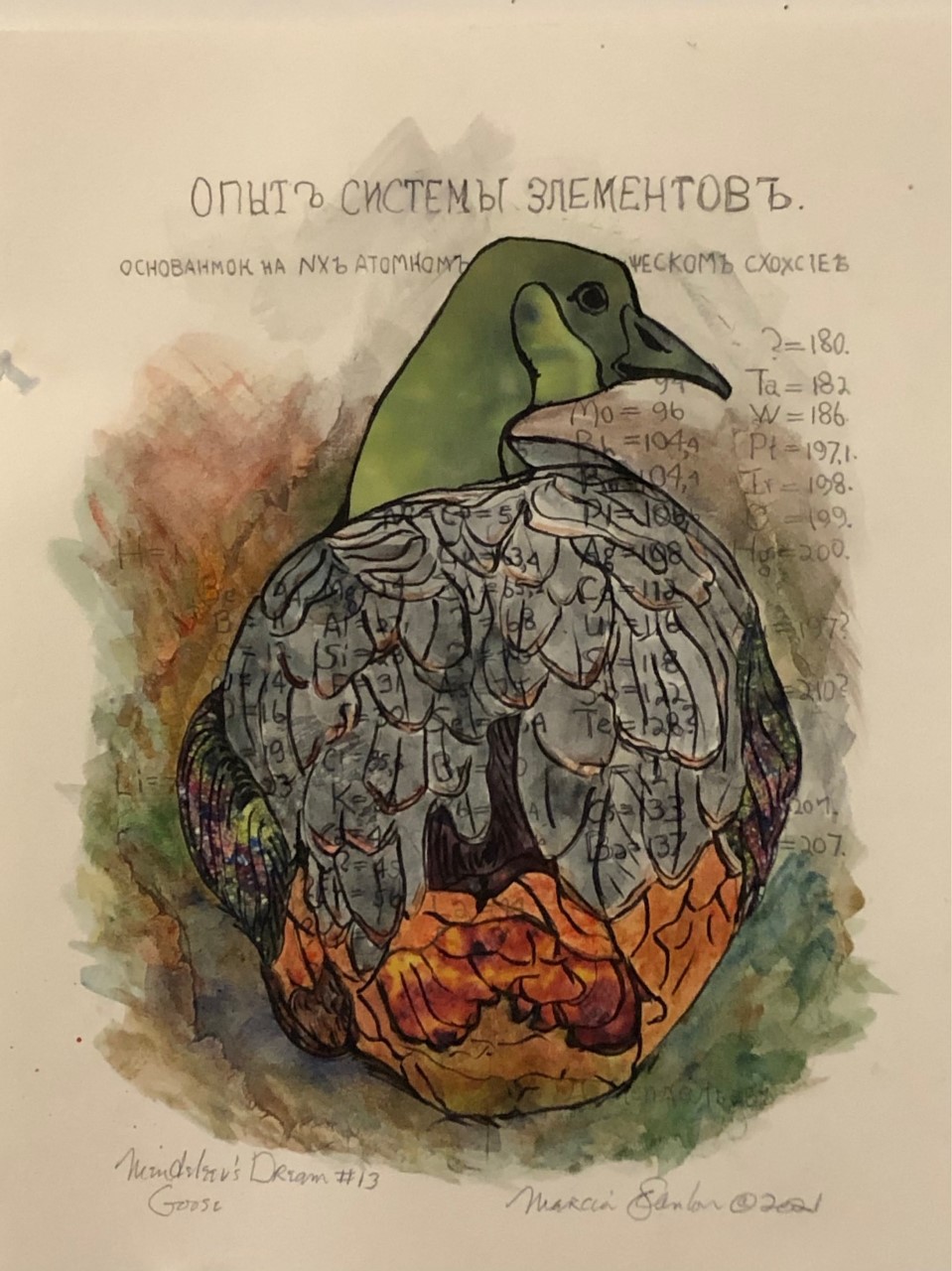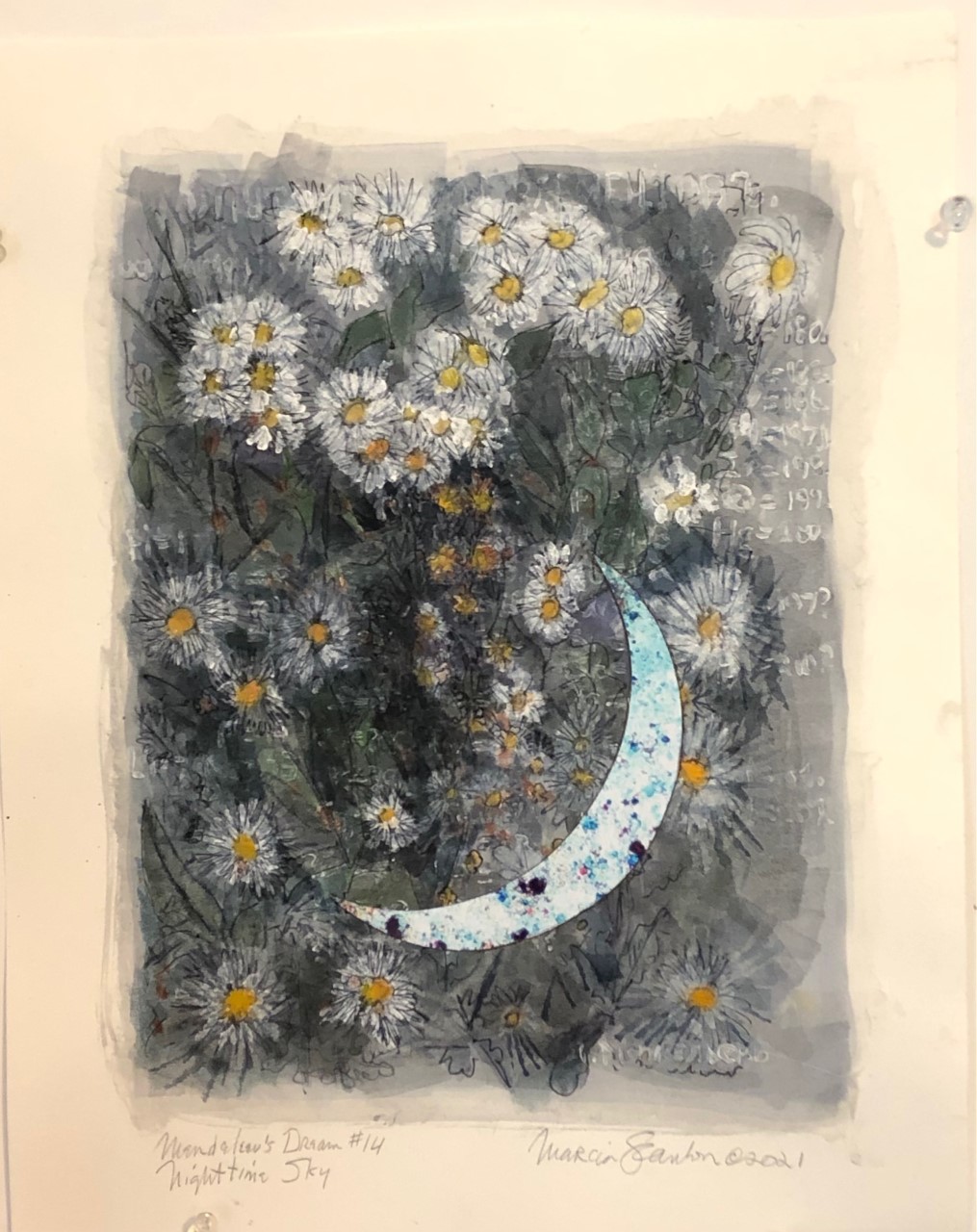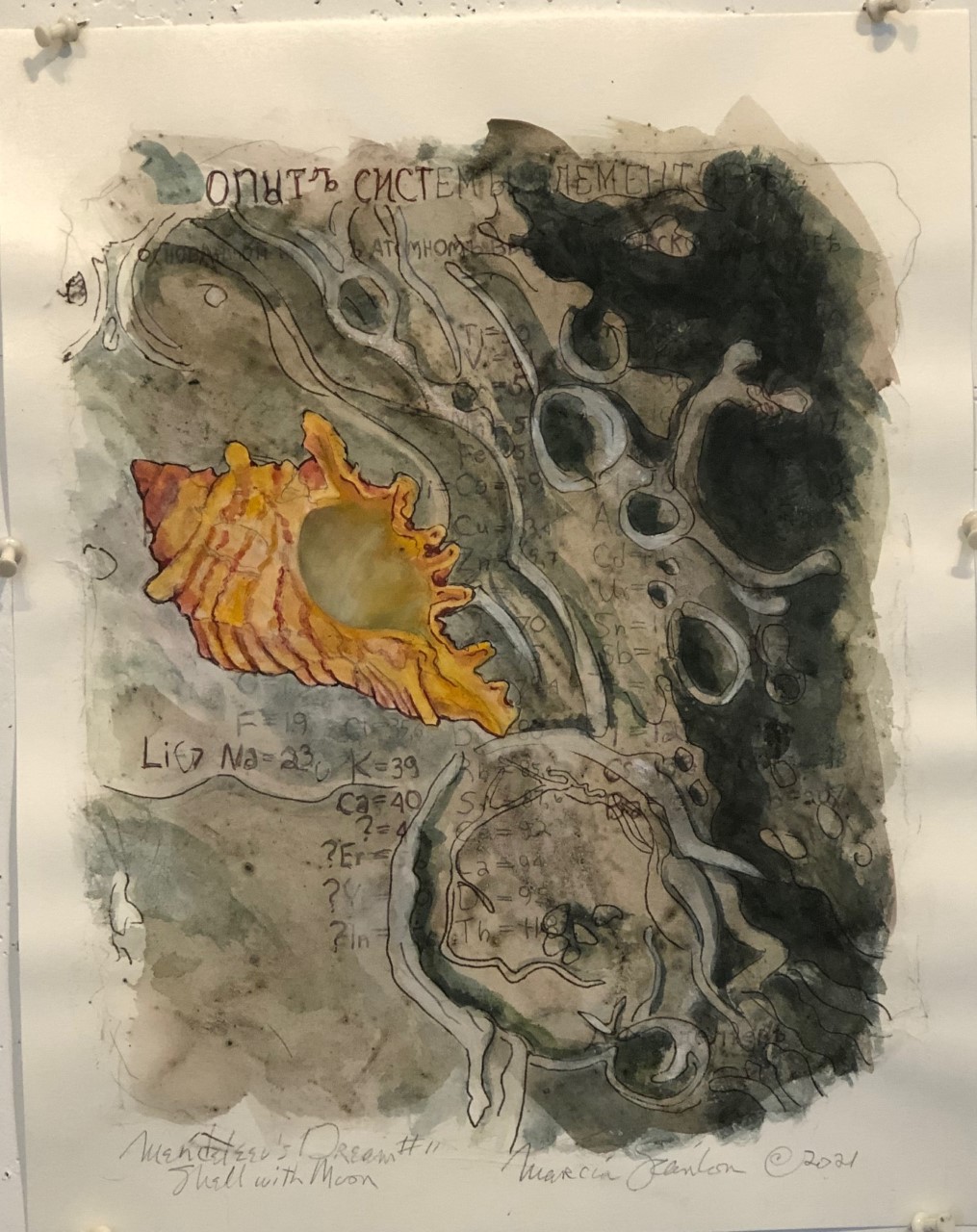Mendeleev’s Dream
This series starts with the pre-Socratic philosopher Anaxagoras in the 5th Century BCE. Anaxagoras described the world as a primary brew of undying elements, whose material variations were never caused by an absolute presence of one element, but rather by that element’s dominance over the others. In his words, “each one is… most manifestly those things of which there are the most in it”. He introduced the concept of Nous (Cosmic Mind) as an ordering force, which dislodged and separated out the variations from the original, nearly uniform brew. Anaxagoras’s concept of undying, omnipresent elements moves me deeply, more so because of its innate correctness. What a genius. What a good guesser.
Next comes Mendeleev. I look for ways of connecting my regard for ancient Greek myth and thought to my present day, so I was thrilled to read of Mendeleev’s dream in which the vision of the Periodic Table of Elements came to him. To be sure, he had been working furiously on the incipient development of the table, but the resolution came in a dream, and this format is still used, greatly expanded.
In my mind, Anaxagoras’s formulation of unseen, unknown elements is made manifest in this Table. So now, I get to layer time and images. Anaxagoras, BCE, Mendeleev, 19th Century, and me, in the here and now. The original Table of Elements with Mendeleev’s signature gives me a matrix, Anaxagoras’s concept of Nous frees me up to combine anything I find appealing in my works, and my microscope allows me to manifest worlds within in my microscapes for collage.

